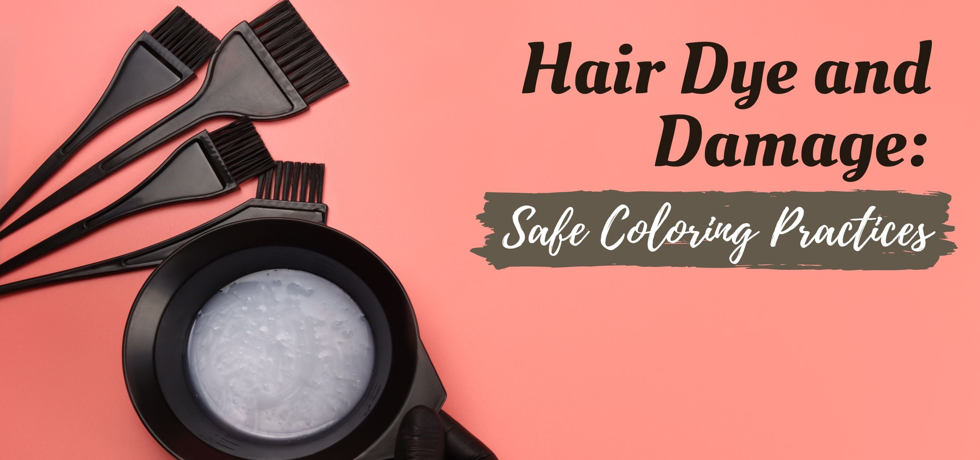
Hair Dyeing: The Ultimate Guide to Safe Coloring Practices
Introduction: The Allure of Hair Dyeing
Hair dyeing has become an integral part of personal expression and beauty routines for many people in India. Whether you’re looking to cover grey hair, try a bold color, or switch up your style, understanding the best practices for safe hair dyeing is crucial. This guide will walk you through everything you need to know about coloring your hair while minimizing potential damage.
Understanding Hair Dye: What It Does to Your Locks
Hair dye interacts with the proteins and lipids in your hair, essential components that determine your hair’s health and structure. Traditional hair dyeing methods can disrupt the inner and outer layer of the hair shaft, weakening it and potentially leading to hair loss or thinning. Thus, knowledge of the chemical processes involved is vital to maintaining vibrant, healthy hair while embracing hair dyeing.
The Science Behind Hair Dye: How It Works
The primary active agents in hair dye, such as ammonia and hydrogen peroxide, play critical roles in altering the hair color. These chemicals penetrate the cuticle to reach the cortex, the main body of the hair where color change occurs. Understanding these chemical reactions will help you choose a dye that suits your hair’s health needs while minimizing long-term damage.
Common Ingredients in Hair Dye: Recognizing Whats Inside
Recognizing the ingredients in hair dye products can empower you to choose safer options. Many commercial dyes include ammonia, which can cause dryness and irritate the scalp. Opting for ammonia-free treatments or those with natural colorants can significantly reduce the risk of damage, ensuring a gentler approach to achieving your desired hair color.
Debunking Myths About Hair Dye
There are numerous misconceptions regarding the safety and effects of hair dye. A common myth is that coloring your hair causes permanent damage; while hair dyes can indeed affect the structure of your hair, many options allow for healthier coloring methods. Organic and semi-permanent dyes, for example, often include plant-based ingredients that are less harsh and provide vibrancy without prolonged damage.
Protecting Your Hair from Dye Damage
To maintain hair health while dyeing, limit washing your hair and choose a sulfate-free shampoo designed for color-treated hair. Conditioning is essential, as it helps to lock in moisture and shine. It’s also advisable to use heat protection when styling and to schedule regular trims to eliminate split ends and breakage.
Natural Alternatives: Safe Coloring Options
For those wary of chemical hair dyes, natural alternatives such as henna, beet juice, or coffee can provide beautiful colors without harsh chemicals. These options nourish the hair while adding a tint, making them appealing choices for individuals seeking a gentler hair dyeing experience.
Post-Dye Hair Care: How to Maintain Vibrancy
After dyeing your hair, it’s crucial to implement a robust hair care routine. Reduce the frequency of washing, use heat protectants, and consider leave-in conditioners to maintain your hair’s health and vibrancy. Regularly treat your hair to deep conditioning masks to nourish and restore moisture.
Conclusion: Embrace Color Safely
Embracing hair dyeing doesn’t have to come at the cost of your hair’s health. By understanding the ingredients, debunking common myths, and practicing safe coloring techniques, you can achieve stunning results while maintaining the integrity of your hair. For personalized hair care assessments and expert advice, consider consulting dermatologists at The Skin Artistry.
FAQ
Q: Can hair dye cause allergic reactions?
A: Yes, some individuals may experience sensitivities or allergic reactions to certain ingredients in hair dye. It’s important to perform a patch test before application.
Q: How often should you dye your hair?
A: It’s generally advised to wait at least 4-6 weeks between coloring sessions, depending on your hair’s condition and the type of dye used.
A: Yes, some individuals may experience sensitivities or allergic reactions to certain ingredients in hair dye. It’s important to perform a patch test before application.
Q: How often should you dye your hair?
A: It’s generally advised to wait at least 4-6 weeks between coloring sessions, depending on your hair’s condition and the type of dye used.
For professional assistance and expert advice from leading dermatologists like Dr. Hital Patel, experience the benefits of Hair Dyeing: The Ultimate Guide to Safe Coloring Practices with Hair & Skin Specialist Dr. Hital Patel at The Skin Artistry. Our clinics in PDPU Gandhinagar, Vastrapur Ahmedabad and Hyderabad (Visiting Consultant) offer top-quality care and personalized treatments. Visit us today to learn more about our services and take advantage of our special offers! For more insights, updates, or to collaborate, stay connected with The Skin Artistry.

